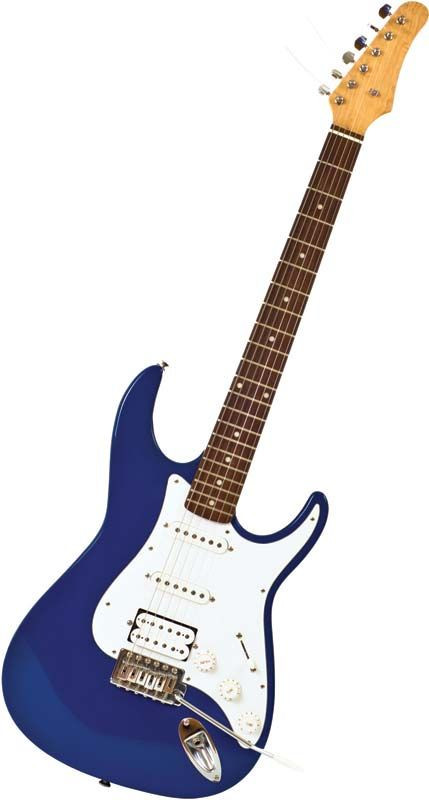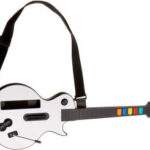The guitar is a stringed musical instrument recognized globally for its versatility and rich sound. Plucked or strummed, it’s a cornerstone of diverse musical genres, from classical to rock. Its history is as fascinating as its sound, with roots tracing back to 16th-century Spain. Evolving from the guitarra latina, a late-medieval instrument, the early guitar featured a waisted body and four strings, marking the beginning of its journey to becoming the modern instrument we know today.
Initially, the guitar was different from its modern counterpart. It was narrower and deeper, with a less emphasized waist. Closely related to the vihuela, a Spanish guitar-like instrument that substituted the lute, the early guitar had its own distinct characteristics. These instruments shared a common musical landscape in Spain, yet each carved its niche in the history of music.
The original design incorporated four courses of strings – three double and a single top course. These strings stretched from a pegbox, similar to a violin, to a bridge. This bridge, glued to the soundboard or belly, bore the string tension. A circular sound hole, often adorned with intricate carved wooden designs, was centrally located in the belly, contributing to the instrument’s acoustic projection. Tuning for these 16th-century guitars was C–F–A–D′, mirroring the central four courses of the lute and vihuela, highlighting the shared musical heritage of these instruments.
Over the centuries, the guitar underwent significant transformations. From the 16th to the 19th century, several key changes reshaped the instrument. A fifth course of strings was added before 1600, expanding its tonal range. By the late 18th century, a sixth course was incorporated, further enriching its sound. A pivotal change occurred before 1800 when the double courses were replaced with single strings. The tuning evolved into E–A–D–G–B–E′, which remains the standard tuning for guitars today, a testament to the lasting impact of this modification.
The pegbox also evolved. The violin-type pegbox was replaced around 1600 by a flat head, slightly angled back, featuring rear tuning pegs. The 19th century brought further refinement with the substitution of metal screws for the traditional tuning pegs, enhancing tuning stability and ease. Similarly, the early tied-on gut frets were replaced in the 18th century by built-in frets made of ivory or metal, offering greater precision and durability. Originally, the fingerboard was level with the belly and ended there, with some frets placed directly on the belly itself. In the 19th century, the fingerboard was raised slightly above the belly and extended over it to the edge of the sound hole, facilitating access to higher notes and expanding playing techniques.
The guitar’s body also experienced a transformation in the 19th century, aimed at enhancing its sonority. It became wider and shallower, featuring a remarkably thin soundboard. Internally, the transverse bars reinforcing the soundboard were replaced by radial bars that fanned out from below the sound hole. The neck construction was also improved. Previously set into a wood block, the neck was redesigned into a brace, or shoe, extending slightly inside the body and glued to the back. This innovation provided increased stability against the constant pull of the strings, contributing to the instrument’s structural integrity and longevity.
These 19th-century innovations are largely attributed to Antonio Torres. His work culminated in the classical guitar, characterized by its string composition of three gut and three metal-spun silk strings. Later, nylon and other plastic materials replaced gut, offering improved durability and tonal qualities.
 Modern Electric Guitar: A Revolution in Music
Modern Electric Guitar: A Revolution in Music
Beyond the classical guitar, numerous variations have emerged. These include the 12-string guitar, known for its richer, chorus-like sound from its double courses of strings. Folk traditions have given rise to instruments like the Mexican jarana and the South American charango, both small five-course guitars with unique regional characteristics. Lyre-shaped guitars enjoyed a period of popularity in 19th-century parlors, reflecting changing aesthetic tastes. The metal-strung guitar, typically played with a plectrum, is a staple in folk and popular music, valued for its bright andProjecting tone. Specialized forms include the cello guitar, which incorporates a violin-type bridge and tailpiece, and the Hawaiian, or steel, guitar, where a metal bar is used to stop the strings, creating its signature gliding, sweet sound. Perhaps the most transformative variant is the electric guitar. In this type, the instrument’s sound and tone are primarily shaped by the electronic detection and amplification of string vibrations, opening up vast sonic possibilities.
Guitar music notation has also evolved. From the 16th to 18th centuries, music was written in tablature, indicating finger positions on frets and strings, or using alphabetical chord symbols. Modern jazz-guitar tablature often combines chord symbols with a grid representing strings and frets, providing a visual and intuitive system for guitarists.
The guitar’s ascent in popularity occurred notably in the 17th century, coinciding with the decline of the lute and vihuela. While it was considered an amateur instrument from the 17th to the early 19th century, several virtuoso guitarists gained recognition across Europe. Figures like Gaspar Sanz (flourished 1674), Robert de Visée (c. 1650–1725), Fernando Sor (1778–1839), and Joseph Kaspar Mertz (1806–56) helped to elevate the instrument’s status. The modern classical guitar technique owes a significant debt to Francisco Tárrega (1852–1909), a Spaniard whose transcriptions of works by composers such as Bach, Mozart, and others formed the core repertoire for concert guitarists.
In the 20th century, Andrés Segovia further propelled the guitar into the concert spotlight, achieving unprecedented prominence for the instrument. Composers like Heitor Villa-Lobos and Manuel de Falla contributed significantly by writing serious compositions for the guitar. Even composers like Pierre Boulez, known for his avant-garde style, incorporated the guitar into chamber ensembles, highlighting its versatility in diverse musical contexts.
Today, the guitar enjoys widespread popularity in folk and popular music across numerous countries. In jazz ensembles, it serves both as a rhythm instrument and occasionally as a solo voice. In popular music, guitars are commonly amplified, and bands often feature multiple guitarists, including a “lead” guitar for solos, a rhythm guitar, and a “bass” guitar for foundational bass lines. From its humble beginnings to its current global presence, the guitar’s journey is a testament to its enduring appeal and adaptability, solidifying its place as one of the most iconic musical instruments in history.

